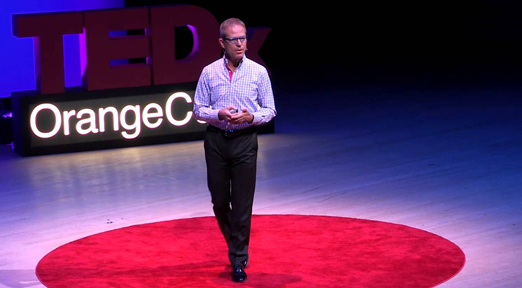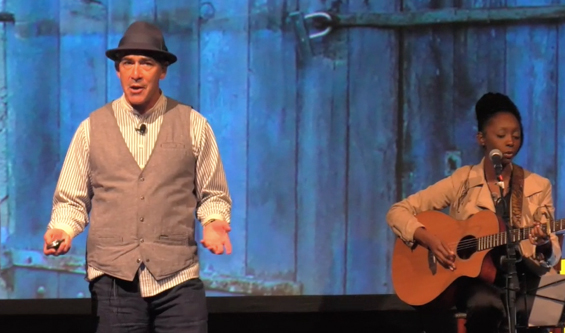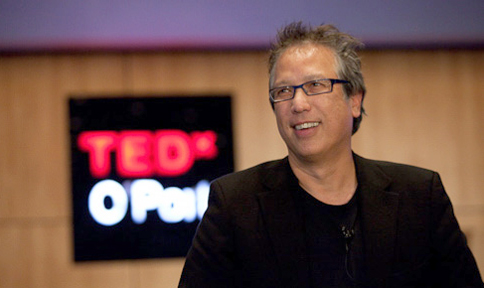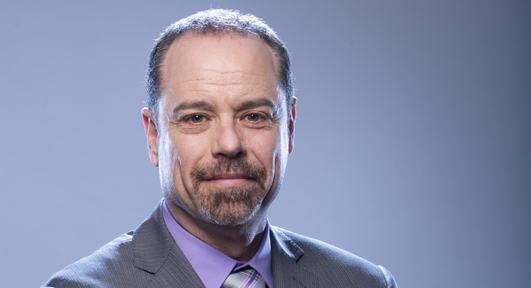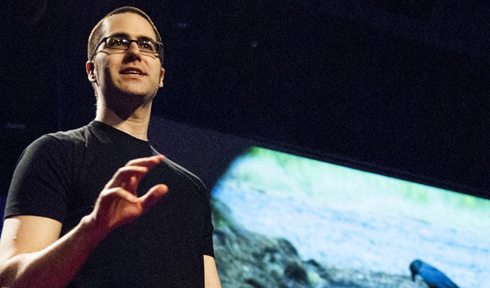
How Small Discoveries Spark Breakthrough Ideas
| I think the biggest misconception people have about innovation is that you need to have a big polished idea in your mind before you begin to implement that idea...Genius lies in the process of getting to an idea. | |
| |
 | What is the biggest misconception that people have about innovation? |
 | I think the biggest misconception people have about innovation is that you need to have a big polished idea in your mind before you begin to implement that idea. People assume that Steve Jobs would just come up with the idea for an iPhone or an iPad in his own mind as if that’s what creative geniuses do, when in reality, the genius lies in the process of getting to an idea. Whether it's artists or entrepreneurs or regular people, the research is pretty conclusive that if you are willing to experiment and toil through iteration, you are much more likely to come up with innovations and creative outputs. |
 | What are some of the most common obstacles that people encounter when trying to cultivate their own personal creativity and/or organizational innovation? |
 | People as individuals and people within organizations face different blocks that can stifle creativity. On the individual level, the biggest block by far is the fear of failure: the fear of not being perfect when you're doing something new. I believe that fear goes back to our early years when we're being educated and told that success is getting a good score or a good grade.
In reality, the creative process for individuals, whether it's Beethoven or Pixar filmmakers or entrepreneurs, requires that you try a multitude of things in order to discover what problems you're even trying to solve. In order to effectively build up ideas and determine which of those are going to interest many people, we need to undergo a process that requires a great deal of rapid low-cost experimentation, or what I refer to as “Little Bets.” Unfortunately at an organizational level, companies don't reward people for trying things; they reward people for coming up with completed ideas or having successful ideas in the marketplace. Generally, in larger organizations, successful ideas might be a billion-dollar business or a very successful approach to selling. That expectation that people need to have fully-baked ideas contradicts every aspect of the research on the origin of innovations. Whether it's Google or Starbucks or Yahoo! For instance, PayPal started in one place and ended up some place completely different once the founders went through the process of discovering the problems that actually needed to be solved, the real demands that needed to be met, and how to monetize them. From an early age then, we have a mindset that stifles our own individual creativity and also stifles the ability for organizations to be innovative. Organizations are unwilling, in many cases, to try things and make mistakes because they're so focused on trying to use logic and deductive reasoning to come up with ideas that are perfect. |
| We're completely wedded to this idea of...making sure we have every 'I' dotted and 'T' crossed when we're starting something new, but that leads to nothing. | |
| |
 | What is the Little Bets approach to innovation? |
 | Little Bets is based on the fact that whether you are an entrepreneur or somebody within a large, established organization trying to create value in new ways or even a teacher trying to teach students in new ways, everybody can pinpoint the things they can afford to lose when they're doing something new.
For example, when Howard Schultz started Starbucks, the first store that he established in Seattle had non-stop opera music playing. It had menus written in Italian. The baristas were wearing bow ties and there were no chairs. Obviously, the first Starbucks was quite different than what we experience today. However Schultz was willing to afford losing customers in those early days in order to figure out what would work and what wouldn't. He was willing to establish a store, a physical store to actually try to figure that out and he has stated that he had to make many mistakes along the way. A little bet then is simply an amount of time or an amount of resources that you're willing to spend to try something new. It's an affordable loss. If it doesn't go anywhere, that's okay. You've determined in advance that you're willing to exert that amount of time or resources towards that small bet. The other way of thinking about creating new ideas is to try to analyze your way into that opportunity to say, "Well, I've done the research and there's this market opportunity, and therefore this idea seems to fit within this market, so let's go build a product and drop it into this market." Alternatively, you can try to figure out everything in advance in a plan that you can execute with a logical set of steps. We're completely wedded to this idea of planning and PowerPoint and making sure we have every 'I' dotted and 'T' crossed when we're starting something new, but that leads to nothing. In fact, in many cases it leads to nothing but big mistakes, wasted time, wasted resources and solving the wrong problems. |
| The research on HP showed that six out of every 100 of those small bets would become a breakthrough idea. | |
| |
 | You've already given us a couple of great examples, but could you give us maybe one or two other examples of how people can apply the Little Bets approach to be more creative in their own work? |
 | Within a corporation there are quite a few ways that a leader who is trying to foster a culture of innovation, can apply a Little Bets approach to their leadership style or their work within the organization.
I spent a lot of time researching Hewlett-Packard, which was the most successful and most innovative company of its era. For 60 years it grew an average of 18% per year. If you compound that annually for 60 years, you are dealing with one of the most successful growth stories in the history of corporate America. A manager at Hewlett-Packard, Ned Barnholt, was actually the person who gave me the idea for the title of my book, "Little Bets", because he said that as HP got bigger and bigger, the pressure grew to make bigger and bigger bets. Every one of those larger bets was based on the idea that HP would be able to enter billion dollar markets with billion dollar products and initiatives; every one of those failed. HP spent hundreds of millions of dollars on these ideas such as flat screen TVs and home monitoring solutions, that were not actually solving the right customer problems because in the end they were just utilizing their brand, technology and marketing in sales channels to try to drop into those markets. However there were already competitors there who knew the actual underlying user needs and problems better than HP did. Ned learned from that very hard lesson that he needed to make several small bets. From that point on he and his colleagues at HP would spend time out in the field with the customers to understand their needs and try a bunch of experiments, which is actually how HP got involved in making calculators. They made several very small bets, many of which didn't go anywhere. Many never took off, but the research on HP showed that six out of every 100 of those small bets would become a breakthrough idea. As Bill Hewitt used to say when they were making the first HP calculator, "what's the most I can lose? " Maybe he could have made a thousand calculators that didn’t go anywhere, but of course we all know that the HP calculator became huge and was the fastest growing product in HP history. If Bill Hewitt hadn't said, "let's just build 1,000 and see what happens," it never would have happened. That's the mindset: think about what you can afford to lose. Regardless of where you are inside an organization, you can afford to give some time, your own efforts, and perhaps a few resources from a budget to an experiment even though you don't know where it's going to lead. The sooner you can find small wins to start establishing an idea, the sooner you can gain support of others inside and outside the organization. Then, hopefully you can drive that into something that will be a game changer for your career, like some of these ideas were for HP. |
| The people whom I deem great leaders are all very curious and creative in a sense that they're willing to experiment. | |
| |
 | What is the relationship between innovation and solid leadership and does a good leader need to be a good innovator? |
 | There are many definitions of what a good leader is; in fact, I have my own idea of what makes a great leader. Since I've had this rather funny job of being an accidental author, I've met many leaders so I have my favorites. My own personal view is that truly great leaders, people like Ed Catmull, the Co-Founder of Pixar, Beth Comstock, the Vice Chairman of GE, the ones who are respected the most widely, the ones who actually are transformative within their organizations and mimicked by people everywhere, are exceptionally curious people and they are very open to trying things. They have the willingness to learn from mistakes and the ability to be very honest with themselves about developing their own self-awareness.
The people whom I deem great leaders are all very curious and creative in a sense that they're willing to experiment. They all understand that growth doesn't happen in a vacuum. You have to be out in the world really deeply understanding the needs of customers or users and be truly curious about those needs. The skill-set of a great innovator is very closely related to that mindset, mentality and set of values. Being a great leader and a great innovator are completely intertwined. You'll find examples of people whom many consider great leaders who may not be as high on the innovation scale. They may be really good at cost cutting, really good at turnarounds or really good at you name it, and they tend to be following more of a traditional set of processes without valuing creativity as much. Certainly there are political leaders who are not all that creative, and yet they can still be considered very effective leaders. ======================================== To bring Peter Sims to your organization to help cultivate innovation and creativity, please contact Michael Frick at: Mike@Speaking.com. |


